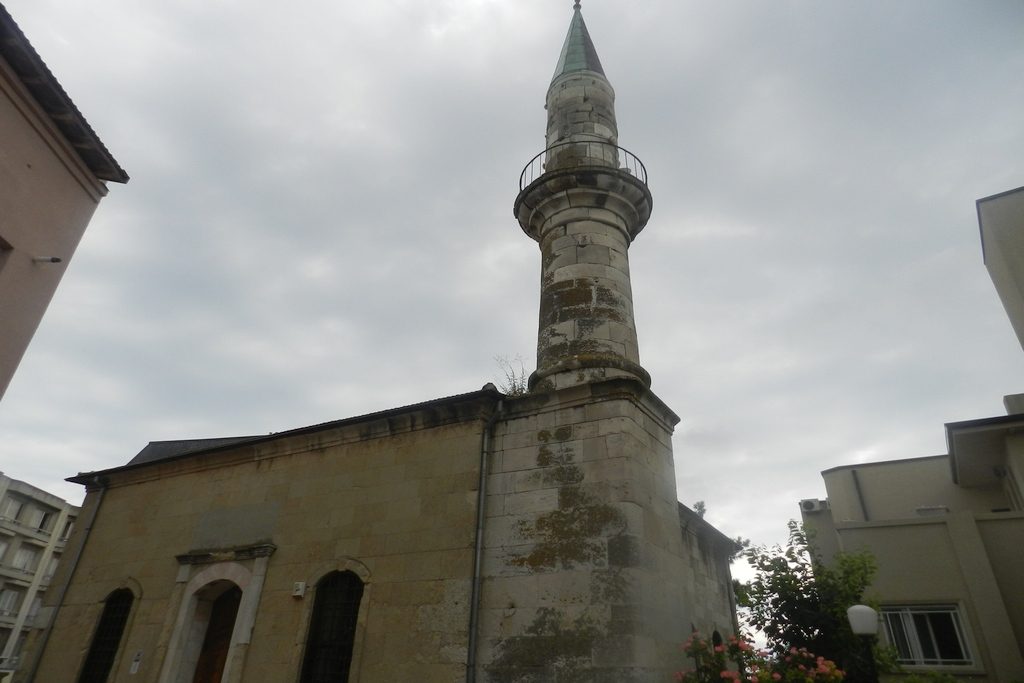

HUNCHIAR MOSQUE has a huge significance for the history and Constanta multiculturalism, being the oldest Muslim religious edifice in the city.
Pages of history told us that, at the early nineteenth century, Constanța, occupying Peninsula Area only (now a historic area, from Casino close to the Folk Art Museumă), was bounded by a a wall of defense with a bastion built by Turks who ruled Dobrogea at the time. This rampart was destroyed in the years 1828 – 1829, it only a pile of white stones. Of those remains it was built in 1867 Hunchiar, a beautiful mosque whose name in Turkish means “governor”.
Having a specific Moorish architectural style the Hunchiar Moaque is a simple edifice consisting of main square wing , housing the prayer room, and a minaret 24 meters high, provided at the top with a veranda/a patio. From the minaret, which is equivalent to the Christian church steeple, call to prayer is done. In the past, the imam, a Muslim priest, was climbing 5 times by day on the top of the minaret to announce the believers, in Arabic it is time to prayer. Today we still can hear the imam’s call to prayer, in Arabic, from the Hunchiar Mosque minaret. The only difference is that imam nu do not climb the minaret patio, but he uses loudspeakers to spread the call to prayer in the air.
During the second World War, the Hunchiar mosque was severely damaged that led to its closure. The church remained in this state until 1990 when representatives of the Muslim religion were busy renovating it. There can still be seen pieces of white stone that made up the wall of defense of Constanta.
Inside, the Hunchiar Mosque is provided with another simple hall, square-shaped where the believers pray. The floor is covered entirely by beautiful Persian carpets and the walls are deprived of religious paintings that render scenes. The only items that adorns the walls of the mosque are some paintings that are written with Arabic letters – verses from the Holy Book, Quran. The main element of worship inside the mosque is the mihrab, the place where the imam officiates religious services. This sactuary, if we can call it like this, is a “niche” in the wall and is dressed in a special tiles, imported from Turkey and inscribed with verses from the Quran. Before the mihrab a Persian red carpet is placed, handmade, given in 2001 by the President of Turkey. To note that the mihrab is always oriented to the Muslim holy city, Mecca. On the right of Mihrab place from which the imam preaches on Fridays and holidays. The minibar is the way to Allah and appears as a wooden balcony with stairs. The number of the stairs is always odd and varies depending on the size of the place for worship.
